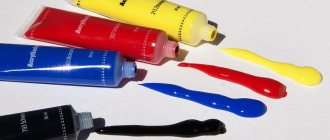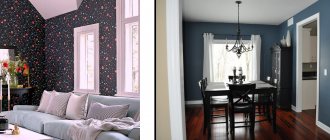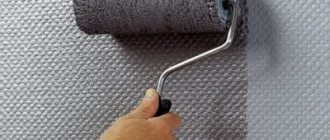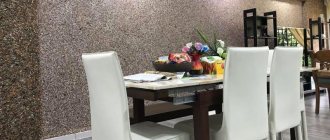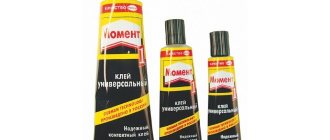Is it possible to wash liquid wallpaper?
From everyday experience we know that wet paper swells, but when it dries, it remains warped. How does the liquid wallpaper behave when wet and during the cleaning process? To understand this issue, let’s remember what the material consists of, what its pros and cons are, and how it behaves during possible cleaning.
Silk plaster was invented a couple of decades ago by French technologists as a material that combines the advantages of decorative plaster compositions, papier-mâché, and paper wallpaper. The dough applied with plastering tools differs from the decorative plaster solution in its components.
The binding agents are water-soluble adhesives that do not lose their solubility in water after each drying. This is Bustilat, PVA or CMC. It was their ability, when wet, to swell and soften, that endowed liquid “silks” with two qualities: simple production and application, easy removal of the old coating. The wet wallpaper finish is removed with a spatula. When dry, the adhesives harden quickly, so 2-3 days are enough to gain strength.
types of liquid wallpaper
The filler (main component) is fibers, according to the type of which wallpaper mixtures are classified:
- silk (can contain only artificial fibers, for example, viscose, or mixed raw materials - natural and artificial silk);
- paper (sometimes colloquially called sawdust) contains cellulose fibers;
- cotton (raw materials - cotton threads and cotton fibers);
- combined (viscose or silk + cellulose or cotton).
The price depends on the type of fiber, as well as the brand. The cost champions are silk blends. By the way, they are the ones who are more resistant to water. Their fibers do not absorb moisture. Cellulose coatings are poorly resistant to wetness.
The fibers present in the dough are reinforcing elements that create a special coating structure. They prevent silk plaster from warping when wet, and also prevent cracks from appearing if minor settlements of the building occur. That is, the coating can absorb moisture from the surrounding air and return water when dry, without forming cracks or sliding down the wall. This ability allows you to use liquid wallpaper to decorate the bathroom.
wallpaper designs
If water does not flow down the wall in a stream, and the coating contains no more water than silk dough when gluing, the coating remains on the wall without disturbing the structure. If even a weak abrasive force is applied to the wet dough, the structure is easily damaged. Therefore, it is not recommended to stick the mass on places of direct contact with liquid, as well as where external force can be applied with a high probability. There are such places, for example, in the kitchen.
To “relieve” silk plaster of “weakness”, a simple (although not ideal) method was invented - coating with varnish “armor”. Applying several layers of acrylic varnish protects the liquid wallpaper from getting wet, and also partially mechanically strengthens the top layer of finish. Therefore, speaking about liquid wallpaper, we next consider two different materials:
- ordinary;
- varnished.
The first material is not washed. Second, it can be washed, but with some restrictions.
Areas of use
The areas of use of liquid wallpaper are very extensive. They are used as finishing coatings in residential and administrative buildings, offices, beauty salons and hotel rooms. Thanks to the large selection of wallpaper colors, this building material is considered universal. Bright shades are suitable for large rooms. Light and warm colors are a great choice for small apartments.
Important : liquid wallpaper is a salvation for those who have moved into new buildings. Everyone knows the fact that over time the foundation of a new house shrinks. There are many unpleasant moments associated with this. For example, regular wallpaper may come off the wall or even tear. By using liquid wallpaper as a coating, most of the above problems can be avoided.
Please note : theoretically, liquid wallpaper can be applied to the walls of the bathroom and kitchen. However, then you will have to use colorless varnish as a special fixing and protective coating. Unfortunately, there are no varnishes made exclusively from natural ingredients. In addition, the effect of “breathing” walls will disappear. Take these nuances into account before gluing liquid wallpaper in rooms with high humidity.
How to care for wallpaper
One of the advantages of silk plaster is its ability to not attract dust or accumulate static charges. This allows the finish to become less dirty. But no finish can get dirty at all. Dust is ubiquitous and must be removed regularly. Remove dust from liquid “silks” by sweeping with a brush with soft bristles, or remove using a vacuum cleaner. The vacuum cleaner brush should also be soft.
cleaning dust with a brush
Since “delicate” liquid silk cannot be washed, stains left on it are removed in several ways:
- wipe using an eraser (like a drawing on paper), this method can be used to remove not particularly stubborn grease stains;
- moisten, remove the stained mass locally, stick on a “patch” from the “excess” remaining during the repair (the method is perfect if there is a desire to add new decorative elements from dough of a different color);
- in case of rusty stains, remove a section of wallpaper, eliminate the cause, and seal it with repair compound (as indicated above).
restoration of liquid wallpaper
It is also possible to disguise the stain, for example, hang an art object over the stain, paint a design, or make a new pattern from wallpaper of a different color, fitting it into the overall interior design. All this is, rather, a reconstruction that allows you to extend the service life of the coating.
You can learn how to restore a liquid wallpaper coating by making a separate “testing ground” (coating a sheet of fiberboard with the dough), according to the application technology. Having learned the art of a “restorer” at the “experimental” site, you will easily solve the problems of cleaning silk plaster in the interior.
To prevent a gray, dirty rim from appearing around the patch being glued on, wet the strip of old coating adjacent to it. The color transition will be smooth.
Varnished wallpaper
The surface protected by a varnish film can be wiped and even washed. If the finish of liquid wallpaper is properly covered with 2-3 layers of acrylic varnish (the best option), then the resulting film can withstand wetting and washing with soft (non-aggressive) agents. When cleaning, the varnish film is protected from damage.
No abrasives or hard brushes! Do not use chemicals for cleaning. By damaging the varnish layer, you can lose this “advantage” - the ability to clean the coating by washing. In addition, the varnish may become dull or stained. You can wipe off borscht stains from varnished silk plaster with a clean damp cloth or napkin.
What to do with a greasy stain?
You won't be able to remove an old stain, but you can fight a fresh one. Take a clean, dry cloth and press it against the wall. Porous fabric will absorb fat. After this, the stain will fade and, most importantly, will stop spreading across the wallpaper. Now you can erase it with an eraser.
We recommend: Choosing a carpet brush - mechanical, manual, electric or sticky?
conclusions
Liquid wallpaper is a unique material in everything. Therefore, their care is special. Liquid wallpaper, varnished and unvarnished, is cared for differently. If you need to wash a wall on which a layer of liquid wallpaper is protected with varnish, use only mild detergents and materials (rags, brushes with soft bristles, sponge).
Keeping in mind the possible need for local repairs, take care to stock up on “excess” dough during repairs. It is enough to spread the mass on film, form a thin layer, and dry. You can store “canned food” in a hermetically sealed plastic bag.
Information on possible care of silk plaster is in the instructions supplied with the mixtures. Having found out whether liquid wallpaper can be washed, you can once again refresh your knowledge about a not quite familiar finishing material in the menu section of our website “Liquid Wallpaper”.
Liquid wallpaper application technology
The process of how to apply liquid wallpaper can be divided into several stages:
- Preparation of material and tools.
- Preliminary preparation of the wall base.
- Preparing the material for application.
- And the application stage.
In order to begin the finishing and application work, you will first need to decide on the quantity and purchase them. Depending on the unevenness of the base and the thickness of the future coating, a calculation is made of approximately one packet of dry mixture, which may be enough to apply to 4–5 sq.m. The cost of one package ranges on average from 330–400 rubles, if we take into account liquid wallpaper from the domestic manufacturer Silk Plaster; in terms of area, application with paper wallpaper is equivalent. And also prepare such working tools as:
- Plastic container for mixing the solution.
- Plastic trowel for applying liquid wallpaper to the surface. Leveling spatula, construction knife.
- Roller for priming walls.
Before starting work, we will need to prepare the wall. Preparation of the base of the walls, not very different from preparation for other finishing materials. If it is smooth or recently plastered, then before applying liquid wallpaper, it is enough to apply a primer. But if you have a completely unprepared wall, crumbly plaster, or there are remnants of old wallpaper or paint on it, you need to get rid of them. And also if there are metal objects on the surface being prepared, such as nails or screws, they should be removed or covered with alkyd enamel to avoid further rust.
Liquid wallpaper: how to apply it to the wall video
Further, during the preparatory work, if there are obvious cracks and joints on the surface of the wall, they should be sealed with sickle and then puttied. In particular, if there is a manifestation of fungi and mold on the surface of the wall, then it must be additionally treated with an antiseptic. After the work has been done, the entire surface should be treated with a special primer, preferably white, and to improve adhesion, it is better to do it in two passes with a break for drying. It is advisable to apply the first layer of liquid wallpaper to the walls with horizontal movements, and the second with vertical movements using a roller.
The next process is the conversion of the dry mixture into a liquid composition ready for application. To do this, you need to fill a plastic container with warm water, about 25–35 degrees Celsius, pour the entire contents of the package into a container of water, at the rate of 7 liters of water per package of the mixture, but it is best to clarify this in the instructions or on the label in the package, so How manufacturers are different.
Next, mix everything thoroughly until smooth. Please note that mixing should be done only with your hands, without using sticks or the like. And yet, in some cases, a set of liquid wallpaper may also include a packet of an additive like glitter; they are diluted into water first, but depending on the desired result, it may not be used. Then the finished diluted composition is re-packed into a bag and allowed to stand for about 12 hours before application, please note that each bag must be infused separately.
Silk Plaster liquid wallpaper: how to apply it to the wall video
The next stage is final, this is application. The application technique can be divided into two ways: applying them using a spatula and a leveling roller, and the second method, which is less popular, using a sprayer.
An affordable way to apply liquid wallpaper is with a staple. On the finished, primed dry wall, apply a small bag of liquid composition and smooth it evenly with a wide staple. The direction of movement does not matter; what is important here when applying is the angle of inclination of the staple, which is in the order of 10–15 degrees of inclination. The optimal thickness of the applied layer should be in the order of 1–2 mm. If the consistency of the mass is very thick, you can add a little water, but keep in mind one liter per package.
It should be taken into account that each package should be mixed with the previous package before application to level out the color transition. After the wall is ready, you need to smooth out the roughness, to do this you need to moisten the spatula with water and walk over the surface again. After all the work done on applying liquid wallpaper, you need to let the finished surface dry for about two or three days, depending on the thickness of the layer, the composition used and the humidity in your apartment; in any case, drafts are not a problem for them, and they are not in danger of peeling off.
In order to give the interior an unusual, attractive look, you can additionally apply patterns or ornaments to the wall. To do this, you can use two options. The first option is to apply a pattern to the primed surface of the wall, along the contour of which a solution of liquid wallpaper is laid, the edges of which are edged with a small spatula. The second option is to apply a pattern to an already finished surface.
